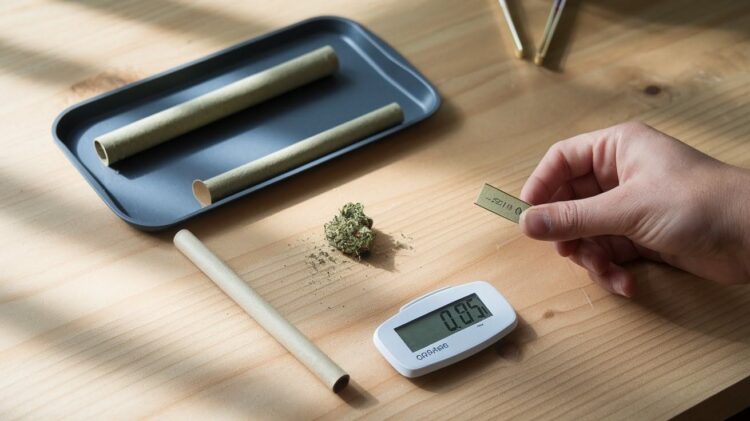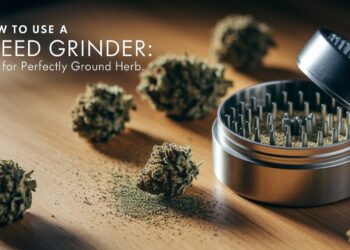Rolling your first joint? You’re not alone in wondering how much weed to use. Too little, and it’s weak. Too much, and it’s wasteful, or overwhelming.
This guide walks you through the ideal amount of cannabis per joint, how to measure it accurately, and what factors affect the perfect dose. We’ll also review different joint sizes, so you can find the one that fits your tolerance.
I’ve made every mistake, joints that burned unevenly, hit too hard, or didn’t hit at all. Through years of hands-on experience and advice from seasoned cannabis users, I’ve figured out what works.
This guide isn’t about getting sky-high it’s about consistency, comfort, and control. You’ll roll smarter, save weed, and enjoy the experience.
Let’s break it down so you can roll with confidence, every single time.
The Science Behind Joint Weight: What Research Shows
Scientific research on joint weight reveals how different factors affect cannabis consumption, helping users make informed decisions about dosing.
Latest Research Findings on Average Joint Weight
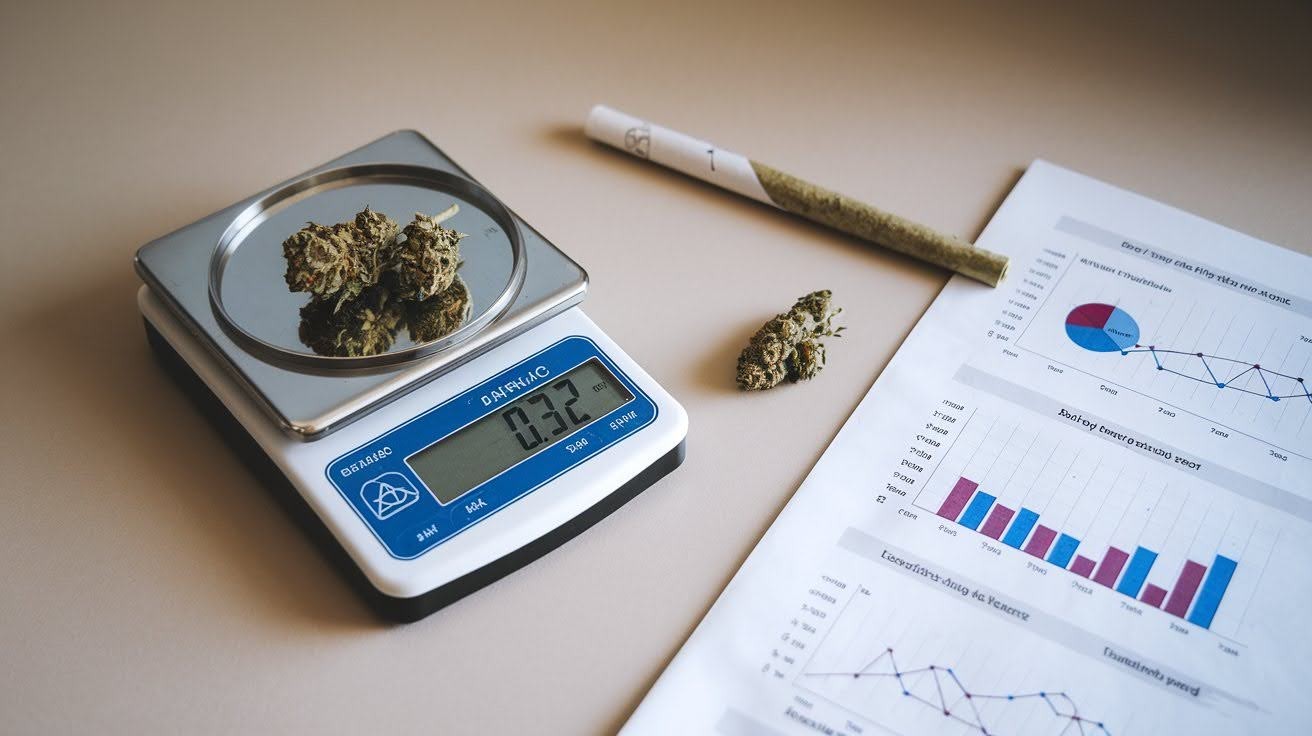
For years, we’ve all been guessing about joint sizes. But now we have real data. Penn University changed everything with its groundbreaking study. They analyzed 10,628 actual marijuana transactions, not surveys or estimates, real purchases from real people.
The result? The average joint contains 0.32 grams of cannabis. This number shocked researchers. Previous studies suggested joints contained 0.43 to 0.66 grams. That’s almost double what people use.
Why the huge difference? Earlier research relied on small samples and outdated methods. The Penn study used modern data collection from thousands of transactions.
Here’s what this means for you: If you’ve been rolling 0.5-gram joints thinking that’s “normal,” you’re using 50% more than average. No wonder your tolerance has been climbing. The science is clear: most joints are smaller than you think.
Why Previous Estimates Were Higher
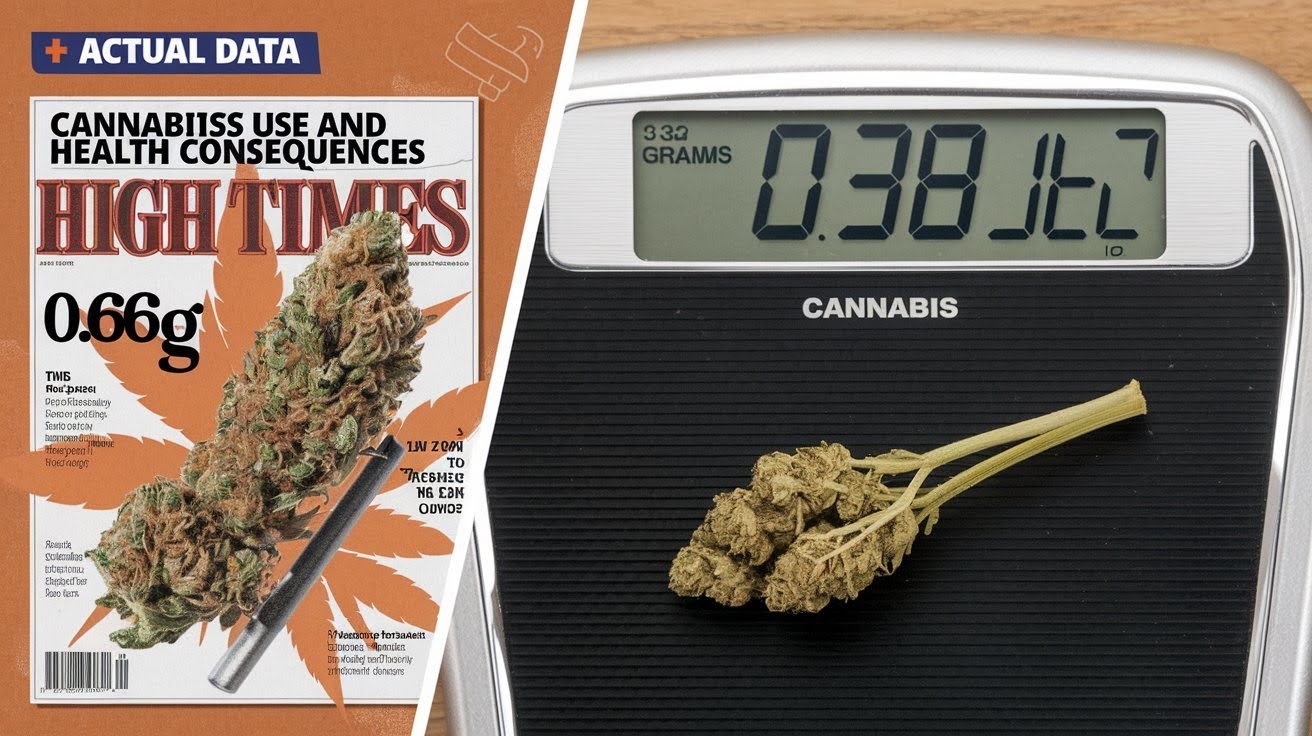
The federal government got it wrong. Their official estimate was 0.43 grams per joint, 34% higher than reality. Earlier studies weren’t much better. They showed a range of 0.43 to 0.66 grams.
But here’s the problem: these studies used tiny sample sizes and relied on self-reporting. Even High Times magazine’s polls showed the disconnect. Readers claimed they rolled bigger joints than what the actual transaction data revealed. People think they use more than they do.
The Gap Between Perception and Reality
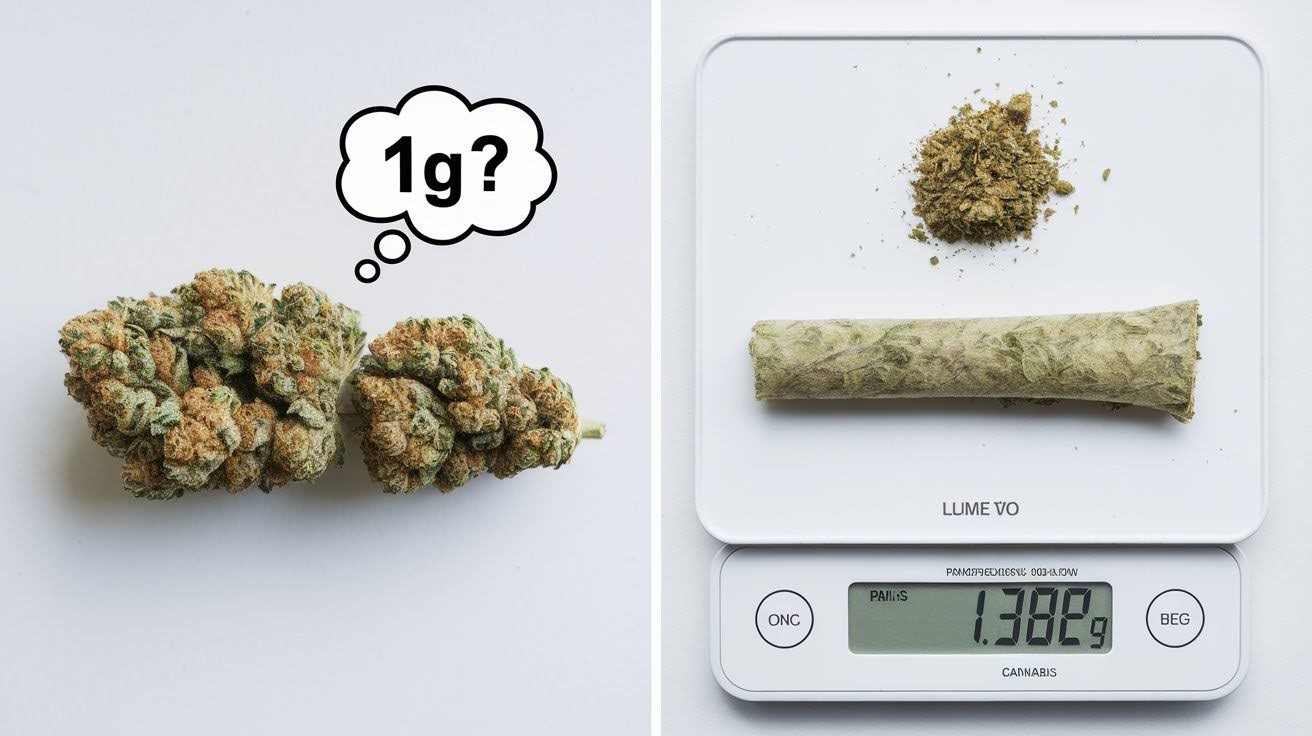
Want to know something wild? Most users estimate their joints contain around 1 gram of cannabis. That’s more than triple the actual average. Why do we overestimate so badly?
The visual trick plays a big role. Ground cannabis looks like more than it weighs. A fluffy, well-ground 0.3 grams can fill a joint paper.
Your rolling technique matters too. Loose rollers think they’re using more because their joints look fat. Tight rollers assume they’re being conservative when they’re actually using standard amounts.
Here’s the reality check: if you think your joints contain a full gram, you’re probably using 0.3 to 0.4 grams max. The Penn study proves most of us have no clue about actual weights. This perception gap explains why so many people waste money and build tolerance faster than necessary.
Standard Joint Sizes and Their Cannabis Content
Understanding standard joint sizes and their cannabis content helps you control dosage and plan your consumption more effectively.
Mini Joints (0.5 grams)
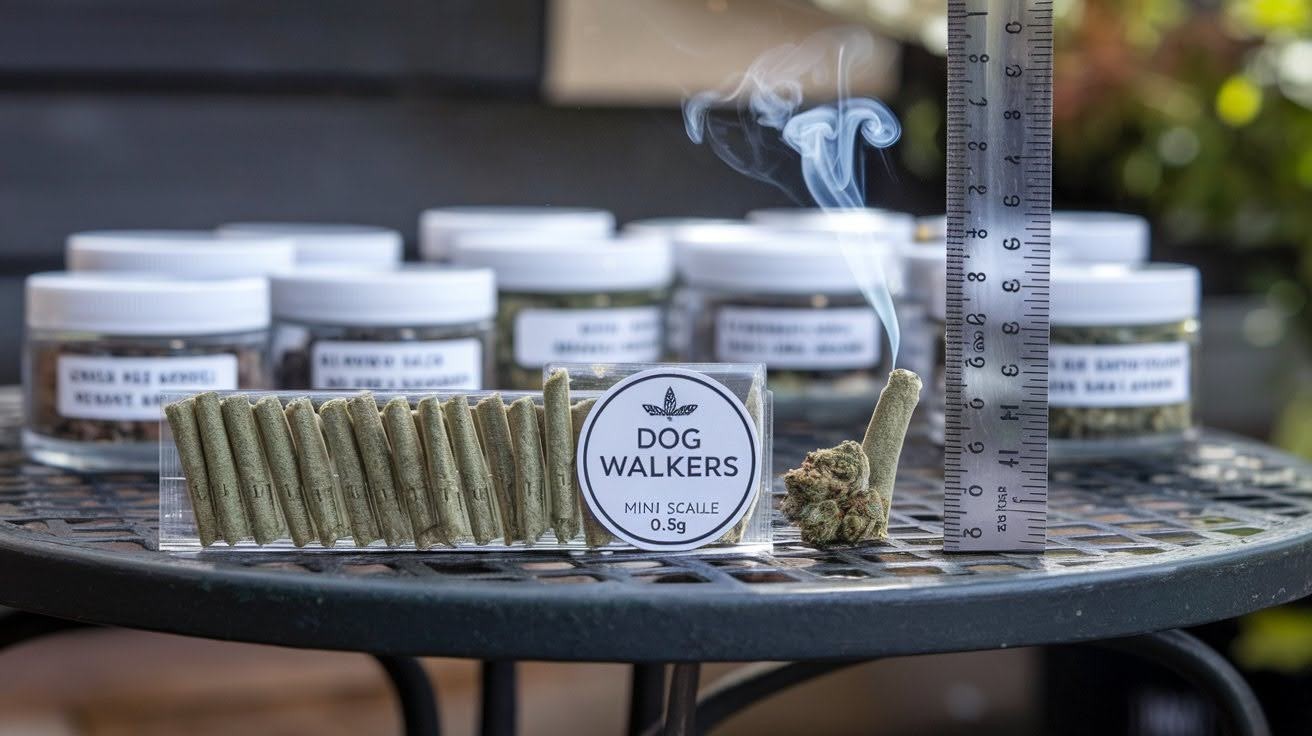
Meet the “dog walker.” That’s what dispensaries call these small joints, perfect for a quick walk around the block. Mini joints pack about 0.5 grams of cannabis. They’re made for solo use.
You light one up, finish it in 5-10 minutes, and you’re done. Here’s why I love them: Most dispensaries sell mini joints in packs of 5 to 7. You get variety without commitment.
Try different strains without buying full grams. Perfect timing, too. One mini joint gives you 1-2 solid sessions. Light it, take a few hits, put it out.
Come back later if you want more. But there’s a catch. Mini joints burn faster than you expect. The small size means less cannabis to slow the burn.
Standard Joints (1 gram)
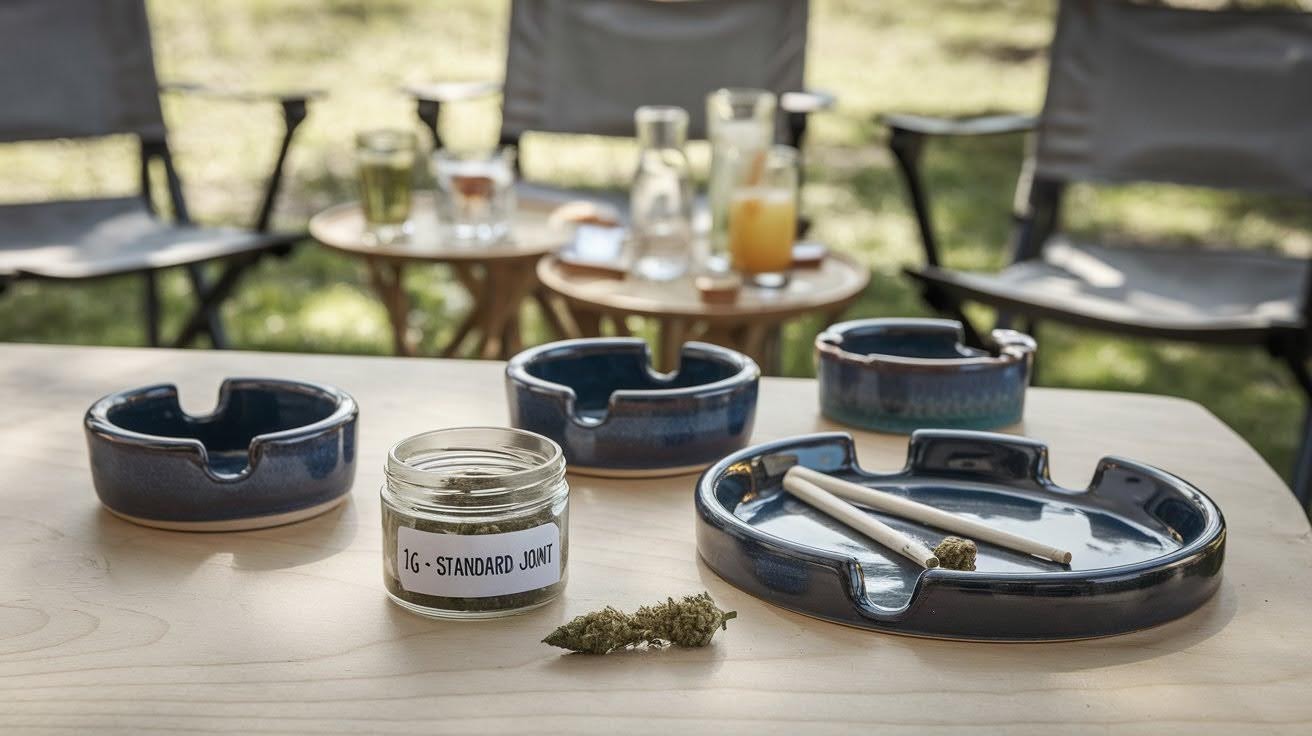
Now we’re talking about sharing size. Standard joints contain about 1 gram of cannabis, enough for 2-4 people depending on your group’s tolerance.
You’ll find these sold individually at most dispensaries. One joint, one purchase. For solo smokers? A 1-gram joint becomes multiple sessions.
Light it, smoke what you want, then save the rest. Most people get 3-4 sessions from a single gram joint. The math works out. Standard joints cost more upfront but offer better value per gram than minis.
Just remember: sharing means faster consumption. That 1-gram joint disappears quickly with three friends passing it around.
Maximum Capacity Joints
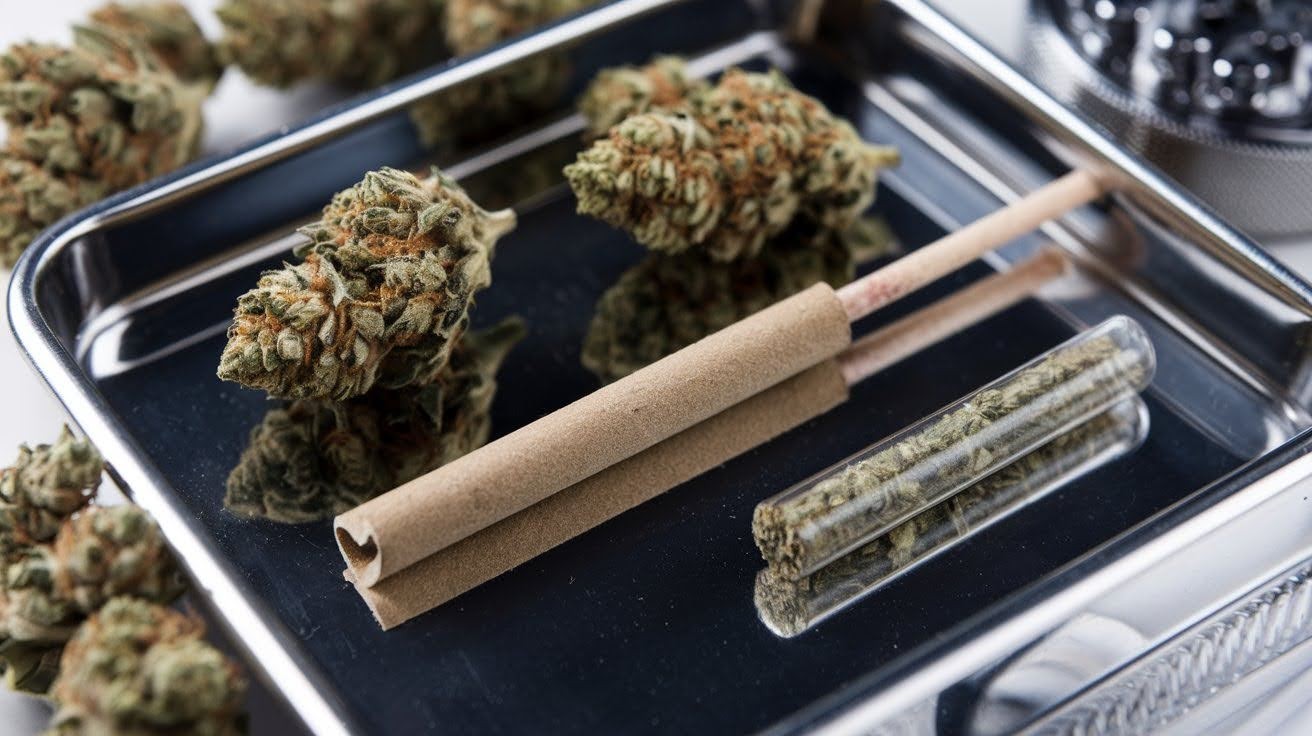
King-size papers exist for a reason. They can technically hold up to 2.5 grams of cannabis. But should you fill them? Here’s the harsh truth: bigger joints have serious problems.
They burn unevenly. The outside burns faster than the inside, wasting your cannabis. You end up with a “canoe”, one side burning while the other stays unlit.
Heat becomes an issue, too. Large joints get too hot to hold comfortably. Your fingers burn before you finish smoking.
The biggest problem? Most people can’t finish a 2.5-gram joint in one session. It sits around getting stale, losing potency, and flavor.
My advice? Stick to 1-1.5 grams max in king-size papers. You get better airflow and even burn without the waste. Remember: quality beats quantity every time.
Key Factors That Influence Joint Weight
Multiple variables affect how much cannabis goes into joints, from rolling technique to paper choice and personal preferences.
Rolling Techniques and Their Impact
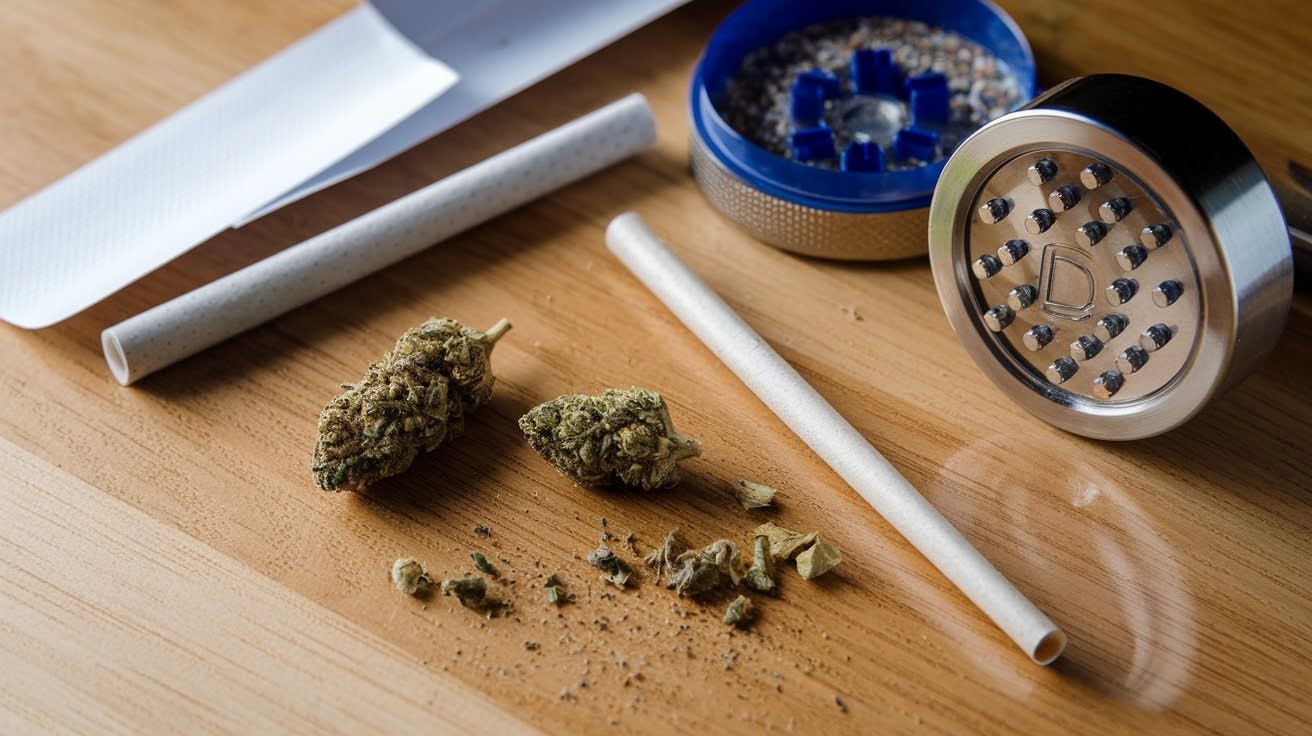
Your rolling style changes everything. Two people can use the same amount of cannabis and create completely different joints. Tight rollers pack more. They compress the cannabis, fitting 0.4-0.5 grams into what looks like a thin joint. Loose rollers use the same amount but create a fat, airy joint.
Grinding makes a huge difference, too. Fine grinding creates powder that packs tightly. Coarse grinding leaves chunky pieces with air gaps. Paper size matters more than you think.
Standard papers hold 0.3-0.7 grams comfortably. King-size papers can fit 0.5-1.5 grams without looking stuffed. Here’s the truth about skill: beginners waste cannabis. They overfill, spill, and create uneven joints. Experienced rollers use less cannabis but create better-smoking joints.
Cannabis Characteristics
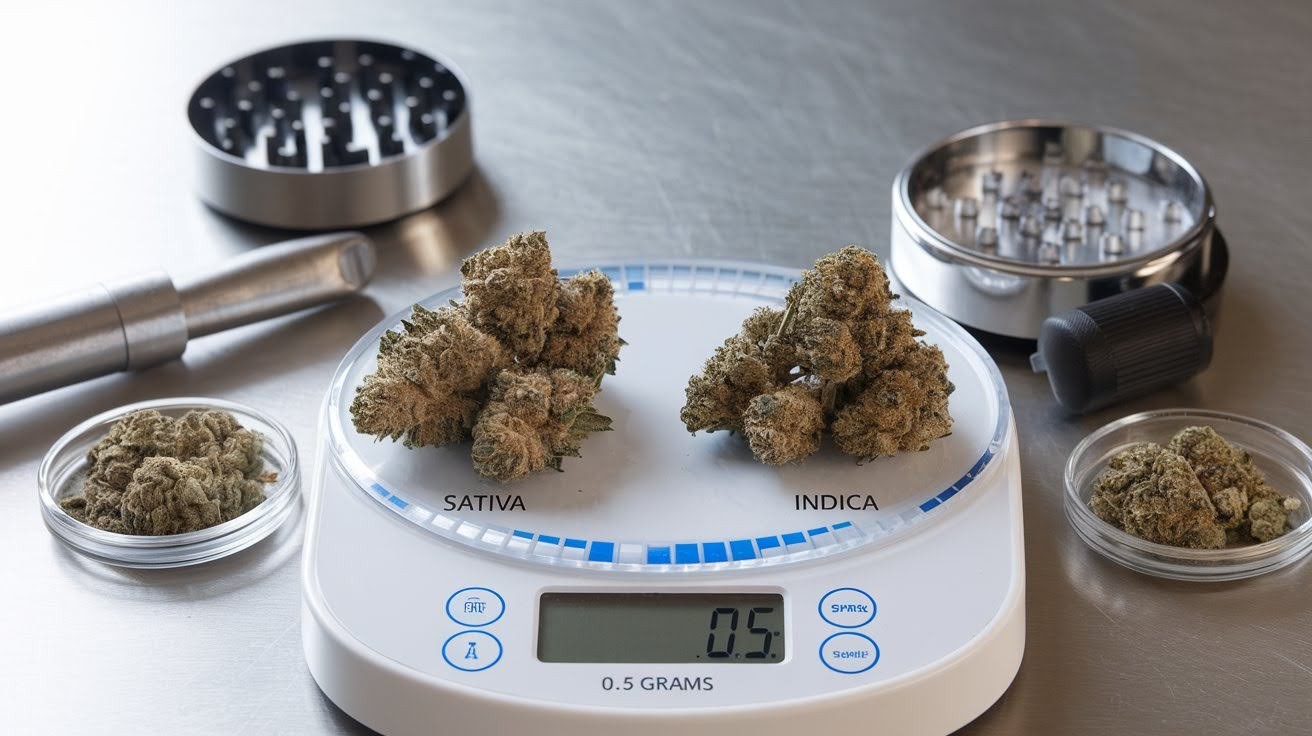
Not all strains weigh the same. Dense, compact buds pack differently than fluffy, airy ones.
Moisture content changes weight, too. Dry cannabis weighs less but takes up the same space.
Fresh, sticky cannabis weighs more and packs tighter. Bud structure affects your joints. Fluffy strains like some sativas create loose, airy joints. Dense indicas pack tightly and burn more slowly.
Your grinder changes the game. Hand-torn cannabis has irregular pieces. Electric grinders create consistent, fine particles that pack efficiently.
Bottom line: the same 0.5 grams can look and smoke completely different based on these factors.
Personal Preferences and Smoking Habits
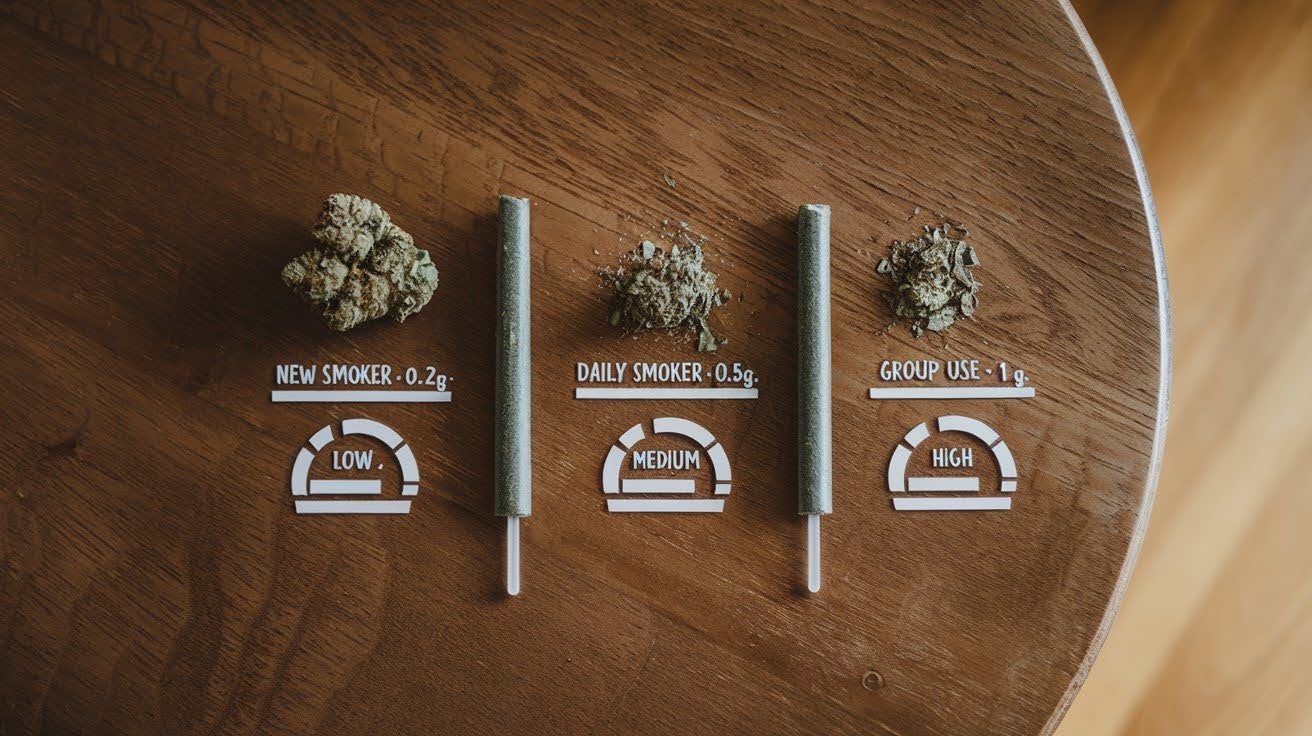
Your tolerance changes everything. New users feel effects from 0.1-0.2 grams. Daily smokers might need 0.5 grams or more for the same feeling. Frequency matters too. Weekend users roll smaller joints than people who smoke daily. Your body adapts to regular use.
Sharing changes the math: Solo smokers can make 0.3 grams in the last multiple sessions. Groups of 3-4 people finish a full gram quickly. THC content is crucial. High-potency strains (25%+ THC) require less cannabis per joint. Low-potency strains (10-15% THC) need more for similar effects.
Here’s what I’ve learned: start small with new strains. You can always roll another joint, but you can’t un-smoke what you’ve already consumed. Match your joint size to your goals, not someone else’s habits.
How Many Joints from Different Cannabis Quantities
Calculating joint yields from various cannabis amounts helps you budget purchases and plan consumption based on your smoking habits.
Joint Calculations Based on 0.32g Average
Let’s do the math. Using the Penn University average of 0.32 grams per joint, here’s what you get:
- 1 gram = approximately 3 joints
- 3.5 grams (eighth) = approximately 11 joints
- 7 grams (quarter) = approximately 22 joints
These numbers surprise most people. An eighth lasts way longer than you think when you roll average-sized joints.
Adjusting for Different Joint Sizes
But you might roll differently. Here’s how the numbers change:
- Mini joints (0.5g): You get fewer joints, but they’re bigger. 1 gram = 2 mini joints. An eighth = 7 mini joints.
- Standard joints (1g): Much fewer joints per purchase. 1 gram = 1 joint. An eighth = 3.5 joints.
Here’s the reality check: most people overestimate joint size and underestimate how long their cannabis will last. Track your actual usage. Weigh your cannabis before and after rolling. You’ll probably find you use less than you think.
Bottom line: buying an eighth gives you more sessions than most people realize when you stick to average joint sizes.
Common Myths and Misconceptions
Popular beliefs about joint weight and cannabis consumption often contradict reality, leading to confusion about proper dosing and effects.
“Bigger Is Always Better” Myth
Big joints look impressive. But they smoke terribly. Here’s what happens: oversized joints burn unevenly. The outside burns faster than the inside. You waste cannabis as it burns off the sides.
Heat becomes a problem, too. Large joints get too hot to hold. Your mouth burns. The smoke gets harsh. The efficiency truth: smaller joints burn more completely. You get more effects from less cannabis. Better experience, less waste.
Optimal size? Most experts agree 0.3-0.5 grams hits the sweet spot, enough cannabis for good effects, small enough to burn evenly.
Standardization Assumptions
There’s no “correct” joint size. Anyone who tells you otherwise is wrong. Regional differences are huge. West Coast joints tend to be smaller than East Coast ones. European joints often include tobacco.
Cultural factors matter: Some groups prefer sharing large joints. Others like individual small ones. Both approaches work fine. Your preference is what counts.
Some people love tiny joints for micro-dosing. Others want big joints for groups. The real standard? Whatever works for your situation, tolerance, and goals. Ignore anyone who says you’re doing it wrong.
Conclusion
Now you know the real answer to “how much weed is in a joint.” The average is 0.32 grams, much less than most people think. Your joint-rolling confusion is solved. You understand why estimates vary so much and how your technique affects the final weight.
More importantly, you know there’s no single “right” amount. Start with 0.3-0.5 grams and adjust from there. Pay attention to how different amounts affect your experience. Track what works best for your tolerance and goals.
Remember: quality beats quantity every time. A well-rolled 0.3-gram joint often provides a better experience than a poorly made 1-gram monster. Got questions about cannabis amounts or rolling techniques? Drop a comment below, I’d love to help you perfect your rolling game.
Happy rolling!
Frequently Asked Questions
How much weed is in a joint on average?
Research shows the average joint contains 0.32 grams of cannabis, much less than most people think. Previous estimates of 0.5-0.7 grams were significantly higher than actual usage data.
How much weed should I put in my first joint?
Start with 0.25-0.3 grams for your first joint. This provides good effects without overwhelming new users. You can always roll another if needed.
How many joints can I make from 1 gram of weed?
Using the average of 0.32 grams per joint, you can make approximately three joints from 1 gram of cannabis. Mini joints allow for more.
What’s the difference between mini and standard joint sizes?
Mini joints contain about 0.5 grams and are perfect for solo use. Standard joints hold around 1 gram and work better for sharing.
Why do people overestimate how much weed is in joints?
Ground cannabis looks like more than it weighs. Most users estimate 1 gram per joint when reality is closer to 0.3 grams on average.

